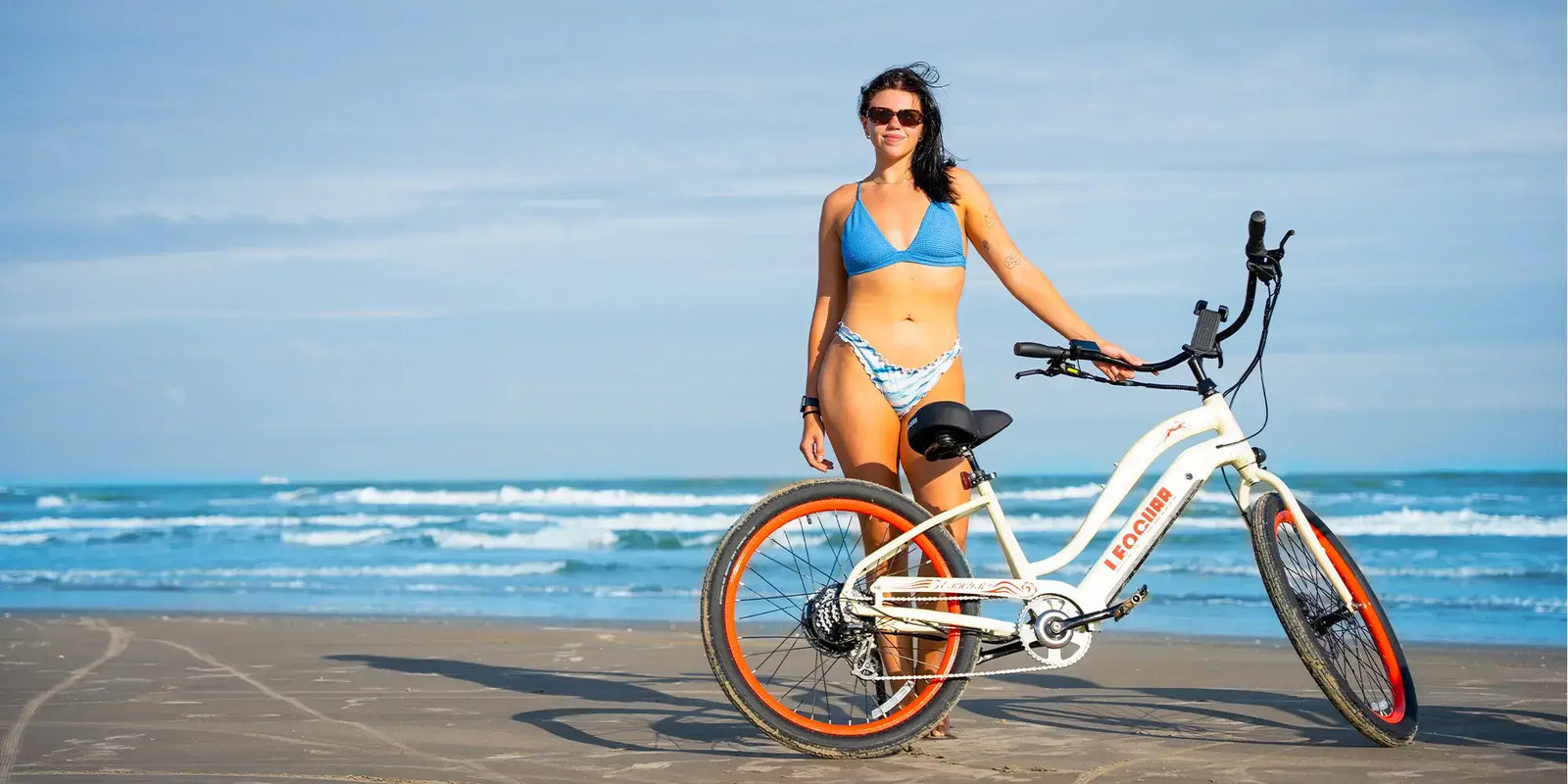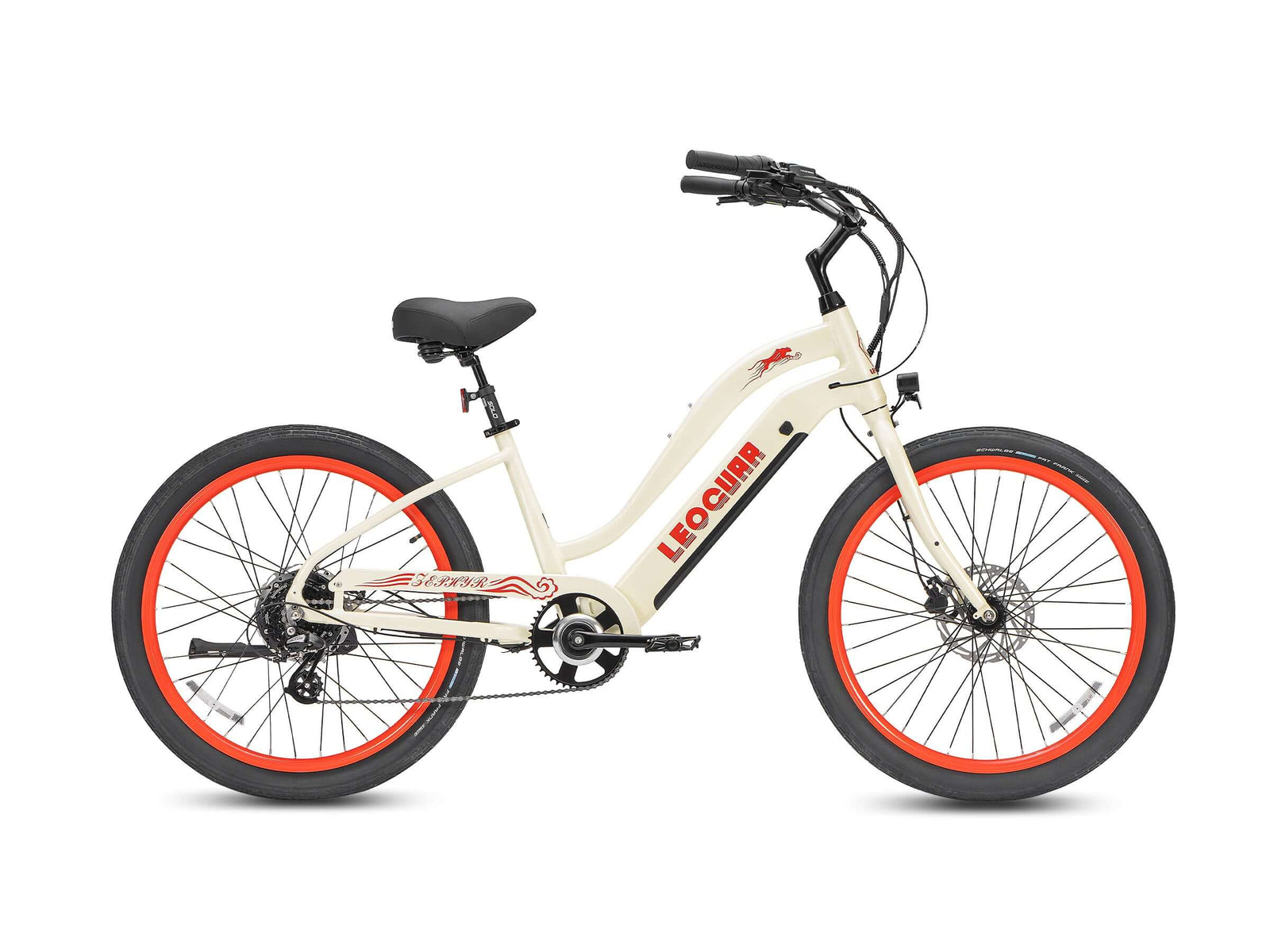
Does Using Throttle Drain Your Ebike Battery Faster? Debunking Myths and Optimizing Efficiency
Introduction: Addressing the Core Question
Electric bikes are popular. They offer a green, efficient, and flexible way to travel while many people wonder if using the throttle drains the battery faster than pedal assist. Ebikes are on the rise. Heavy throttle use can drain the battery more quickly, but many factors affect the outcome in real use.
This article studies the mechanics of the ebike throttle. We explore how throttle and pedal assist work and share tips to help you get the best battery life. An ebike throttle gives power at the press of a button or a twist of a grip. Many riders like this quick boost for rapid starts, stop-and-go traffic, and steep hills. It is simple. When you rely on the throttle alone, the motor pulls power only from the battery and uses it faster.
We use real examples and industry data. Our study shows that too much throttle use makes the battery drop faster than when you pedal along with it. Industry experts share their hands-on knowledge in this article. We cover ideas like hall-effect sensors, battery range effects, and how the throttle works with the motor.
Riders can balance throttle use and pedal assist. This balance helps keep the ride responsive and the battery efficient. In what follows, we break down how the throttle works, compare its pros and cons with pedal assist, and review data about battery drain. We aim to help riders—from commuters to adventurers—learn how to save battery power while still using the throttle when needed.
What is an Ebike Throttle?
An ebike throttle is a handlebar control. It lets riders start the motor without pedaling. It is like a mini accelerator. There are twist and thumb versions, and they work with simple sensors and controllers.
How an Ebike Throttle Works
The throttle starts the motor when you use it. A sensor (usually a hall-effect sensor) picks up your input and sends a 0 to 5 volt signal to the motor controller. This signal is clear. The controller then tells the battery to power the motor at the level you need, giving you quick acceleration without waiting for pedal assist.
It is a simple system. Riders get a fast boost for steep climbs or busy streets. People with real industry experience have seen that throttle use adds comfort during frequent stops. It gives extra power on demand, but it can use more energy. This fact is proven. Tests show that continuous throttle use without pedaling cuts the bike’s range noticeably because it needs a strong power flow from the battery.
Pros and Cons of Using a Throttle
Throttle use has clear benefits. It makes starting fast and helps riders move without much effort. It is great for action. The power is instant for merging in traffic or handling busy intersections.
There are downsides too. Using the throttle alone makes the battery work harder, so it drains faster and gives less range on long rides. It is not perfect. Some places even have legal limits on ebikes with throttles, so riders should check the rules before buying.
Throttle vs. Pedal Assist: A Detailed Comparison
Riders often compare throttle mode with pedal assist. They want to know which way saves more battery power and offers better performance. Both methods have perks. Throttle mode gives quick power while pedal assist saves energy by using your pedaling effort.
Battery Consumption Differences
Throttle mode pushes the motor to work hard. When you use the throttle, the motor pulls all its power directly from the battery without any help from your legs, which makes the battery drain faster. The effect is clear. Tests show that a 15Ah battery may let you ride only 25–30 miles using only the throttle. Pedal assist lightens the load. By using your pedaling, the battery lasts longer and can push the mileage to 40–50 miles.
Performance and Efficiency Comparison
Throttle use gives an immediate jolt of power. It works like a scooter for a burst of speed. It is fast but simple. However, relying only on the throttle gives you less exercise since you do not pedal as much. Pedal assist shares the work. It helps your efforts with extra power and adapts the support as needed. The system is smooth. It uses the battery more wisely, builds a better workout, and keeps the bike running efficiently for longer periods.
A comparison table summarizing battery range under typical conditions is useful:
| Mode | Approximate Range (15Ah Battery) | Key Features |
| Throttle Only | 25–30 miles | Instant power, high motor load |
| Pedal Assist | 40–50 miles | Balanced effort, enhanced battery life |
Data from sources like "How to Make Your Electric Bike Last Longer" and "Exploring How Electric Bike Throttles Work" support these findings. These details are clear. They show that even though throttles give quick power, pedal assist is better for saving battery on longer trips.
Factors Affecting Battery Drain When Using the Throttle
Many things affect how fast the battery drains with the throttle. Rider weight, the road, and weather all play a role. Each factor is simple. They add up to change how much power the battery loses when you use the throttle.
Rider Weight, Terrain, and Speed
A rider’s weight matters a lot. Heavier riders need more power for the motor to move the bike. The effect is strong. Riding uphill or on bumpy roads forces the motor to work harder, draining the battery even more. Speed matters too. High speeds from steady throttle use push air resistance higher, which uses up extra battery power.
Frequency and Intensity of Throttle Use
How you use the throttle makes a big difference. Short bursts of throttle used with some pedaling keep the battery safer. This is simple. Continuous heavy throttle use forces the motor to work at high power and makes the battery get hot and drain faster.
External Conditions: Weather and Wind Resistance
Weather also matters a lot. Cold temperatures can reduce battery efficiency and make even light throttle use drain power more quickly. It is evident in tests. Strong winds face the bike as resistance, forcing the motor to work harder, and reducing range by as much as 20–30% on a 15Ah battery in tough weather. Studies show that using short bursts of throttle instead of long ones helps the battery last longer. This tip works well. Using a balanced throttle minimizes surprises and keeps the battery healthy over time.
Unique Insights & Best Practices for Battery Conservation
Smart use of throttle and careful battery care go hand in hand. Simple tips and tests from the field have proven this to be true. They are simple to use. You can mix throttle bursts with pedaling to save battery, and you can follow easy maintenance tips to keep your battery in good shape.
Optimizing Throttle Usage
Use the throttle with care. Slow acceleration and mixing in pedaling give better battery life. It is a clear method. Instead of pressing full power right away, use a lighter touch so the motor ramps up slowly and avoids big bursts that strain the battery.
One rider changed their style by using the throttle only to start or beat obstacles. This method improved their battery life over long commutes by avoiding constant heavy throttle use. The idea is simple. Monitoring your power use with a battery management system helps you see when to switch between throttle and pedal assist.
Maintenance and Battery Health Tips
Good care makes the battery last. Charging it properly and following the rules from the maker are key steps. It is easy to remember. Avoid letting the battery drop below 10% too often, and try to recharge it before it gets too low.
Regular checks matter. Clean the connectors, look for wear, and store the battery in a moderate temperature area to keep it healthy. Taking care of the battery on long rides is smart. It helps you avoid overheating from too much throttle use and keeps the system working well.
Using Technology to Monitor Battery Usage
Modern tech can help you watch your battery’s health. Many ebikes come with tools and mobile apps that show real-time data on energy use, range, and motor work. These tools are clear. They let you see the effect of full throttle versus short bursts, so you can decide when to switch to pedal assist.
For example, one chart shows the energy draw for different styles:
| Riding Mode | Average Energy Draw (W) | Estimated Range Impact (%) |
| Full Throttle | 700–900 | High |
| Intermittent Throttle | 500–700 | Moderate |
| Pedal Assist Only | 300–500 | Low |
The table is useful. It shows that setting alerts when the battery is low helps you change modes and save power. These smart tools improve how you ride. Over time, data helps you learn the best ways to manage battery use and avoid surprises.
Final Thoughts and Recommendations
Throttle use on an ebike can drain your battery faster. Many factors, like your weight, the road, and the weather, play a role in the outcome. The facts are clear. A throttle gives instant speed but at a cost to battery range when used too much without pedaling.
Summary of Key Points
• Throttle mode makes the motor use full power and drains the battery faster than pedal assist, which joins your effort with the motor.
• Many things affect battery use, including rider weight, the terrain, speed, and weather.
• Mixing short bursts of throttle with pedal assist can save battery life.
• Good battery care such as proper charging and regular updates helps the battery last longer.
• Modern tools that track energy use let you choose when to switch modes for the best performance.
Recommendations for Different Riding Scenarios
Use mostly pedal assist for long rides or daily commutes. It saves battery power better over long distances. It is a simple rule. Use the throttle only when you need a short burst of speed, like pushing through traffic or climbing hills. If you ride in hilly areas or in bad weather, be extra careful. Mixing the modes and using short throttle bursts is best for keeping your battery longer.
It is clear advice. A ride that mixes throttle and pedal assist gives you comfort and saves power at the same time. In conclusion, knowing how the throttle and battery work together is very important. You can make better decisions by balancing throttle use with pedaling, taking care of your battery, and watching real-time data. These steps are smart. Try these techniques to make your ride safer, more efficient, and more fun while keeping your battery in good shape.
FAQ
-
Q: How much does using throttle-only mode reduce e-bike battery range?
A: Using throttle-only mode typically reduces range by 40-50%, from 40-50 miles to 25-30 miles on a 15Ah battery.
-
Q: Is pedal assist more efficient than throttle mode?
A: Yes, pedal assist is more efficient as it combines human power with motor assistance, extending battery life by up to 60%.
-
Q: What external factors affect e-bike battery drain when using throttle?
A: Key factors include rider weight, terrain type, weather conditions, and wind resistance, with headwinds reducing range by 20-30%.
-
Q: How can I optimize throttle use to save battery life?
A: Use throttle in short bursts, combine with pedaling, and avoid full-power acceleration for optimal battery efficiency.
-
Q: What's the average power consumption difference between throttle and pedal assist?
A: Full throttle uses 700-900W, while pedal assist typically uses 300-500W, resulting in significantly lower battery drain.










































Leave a comment